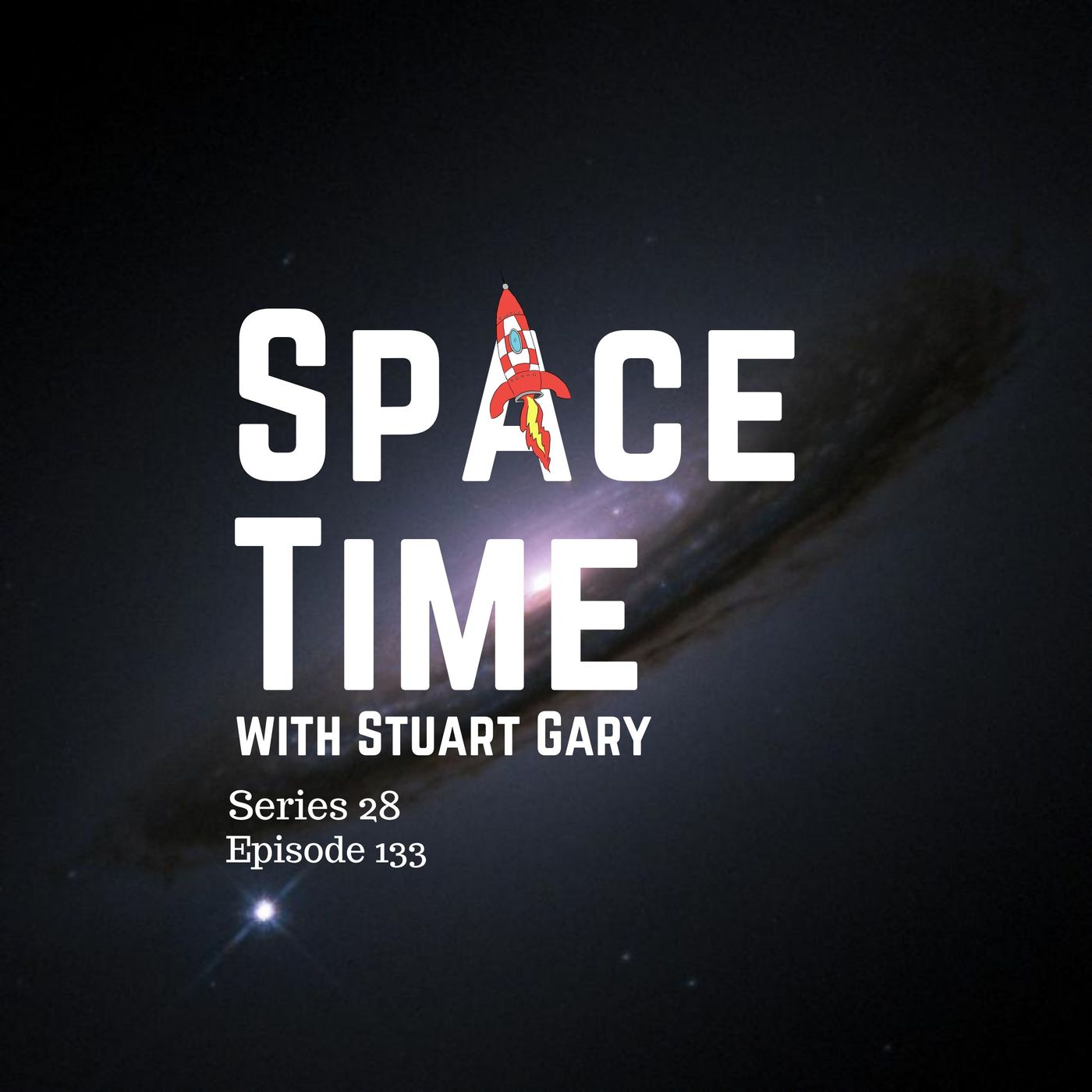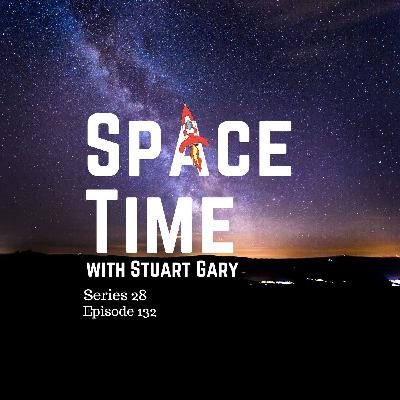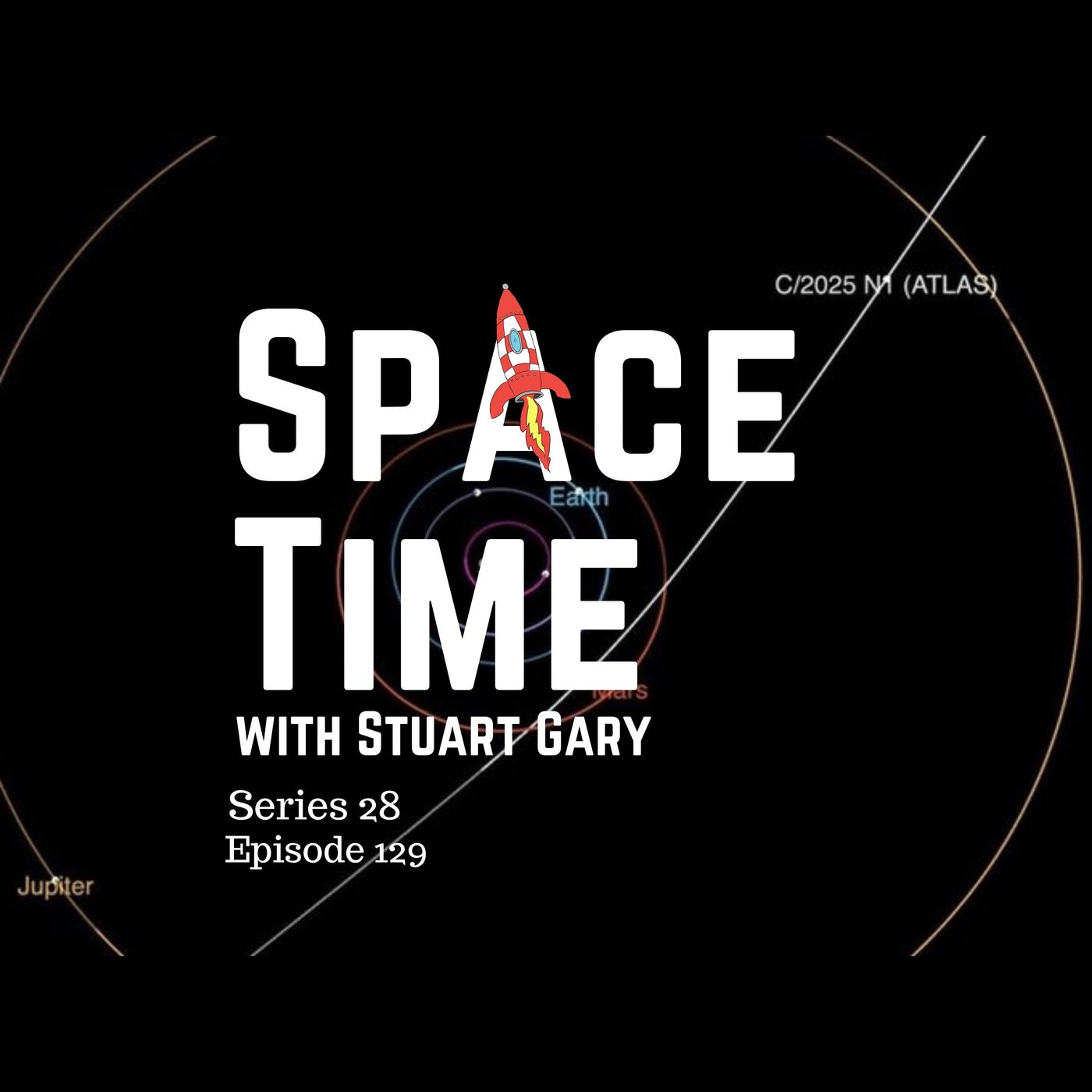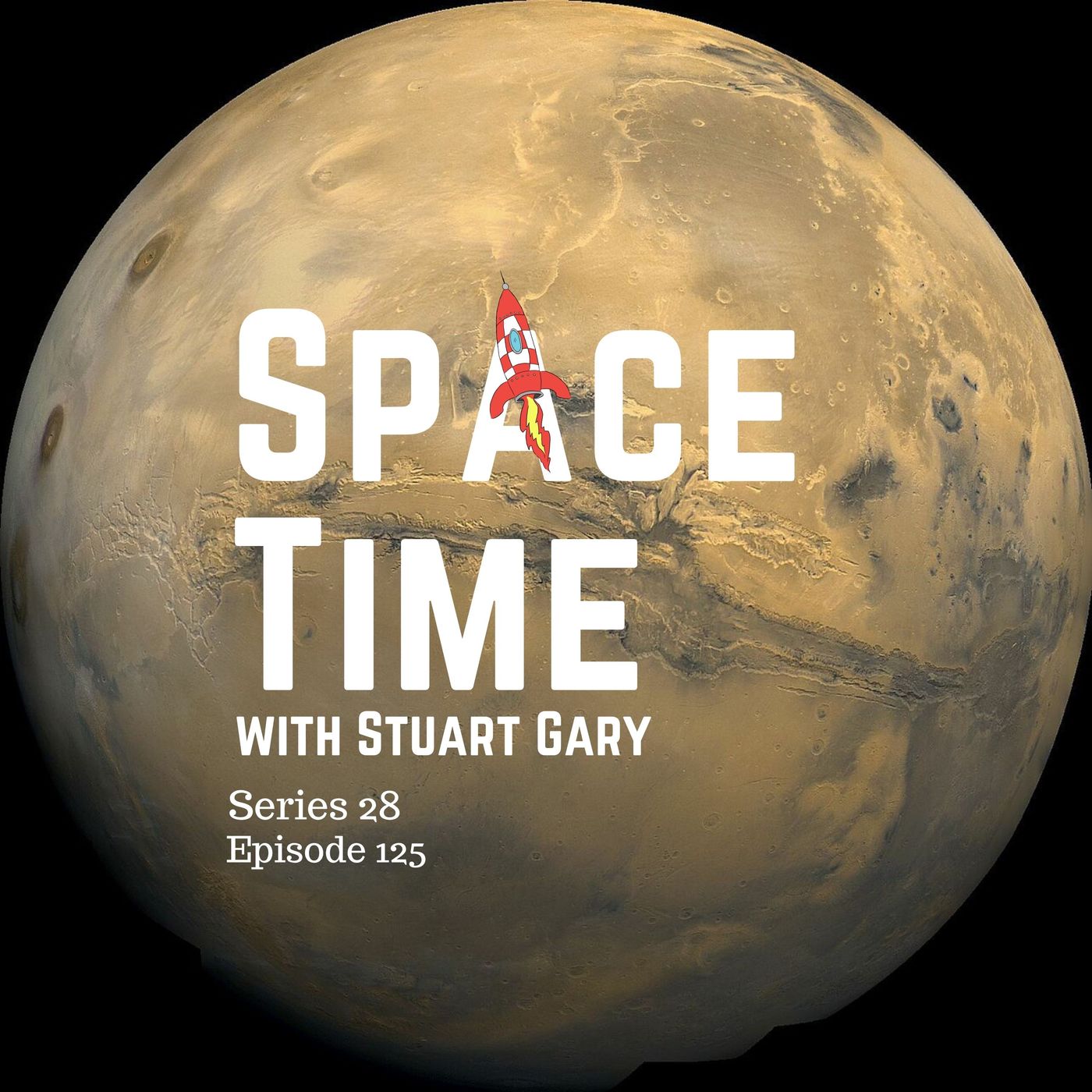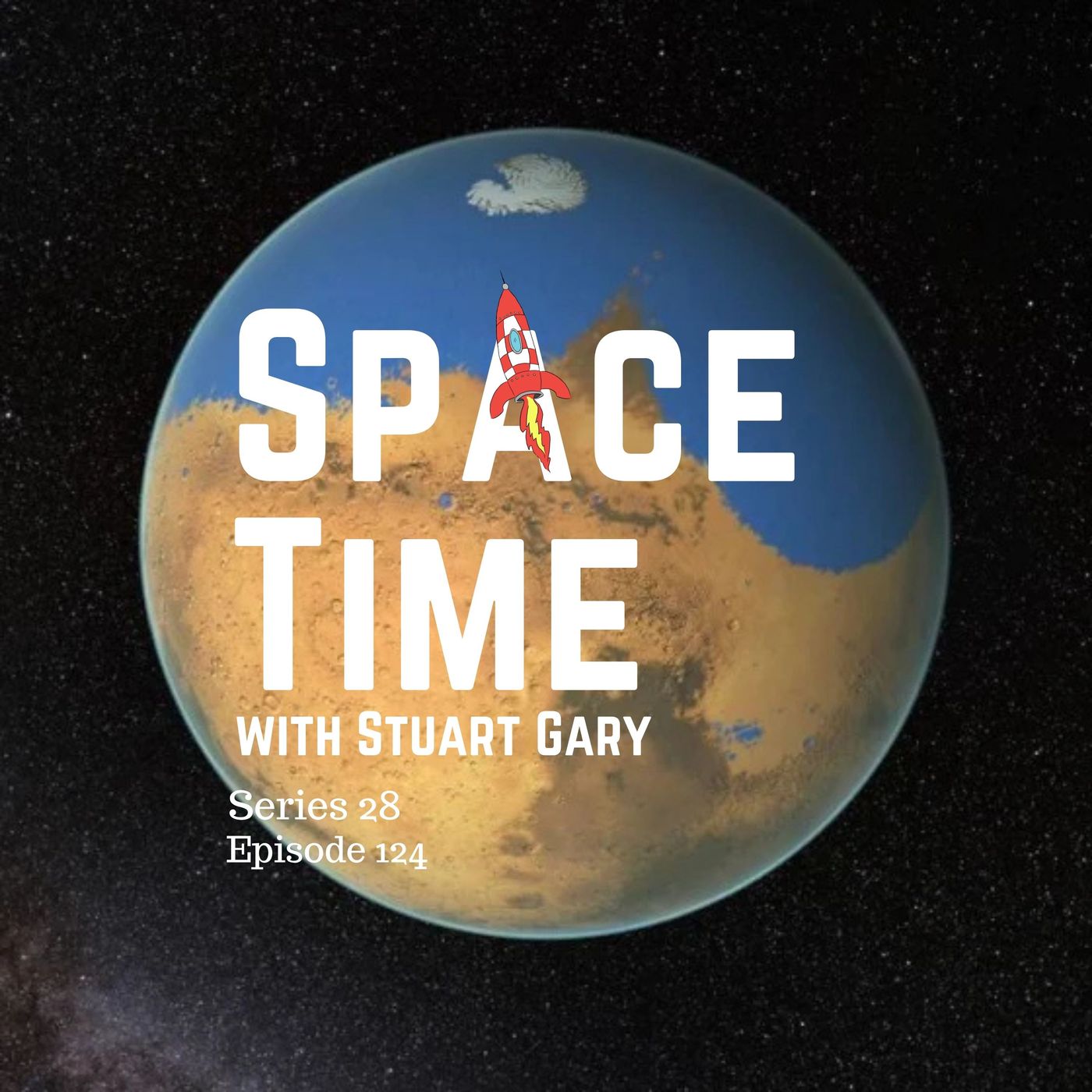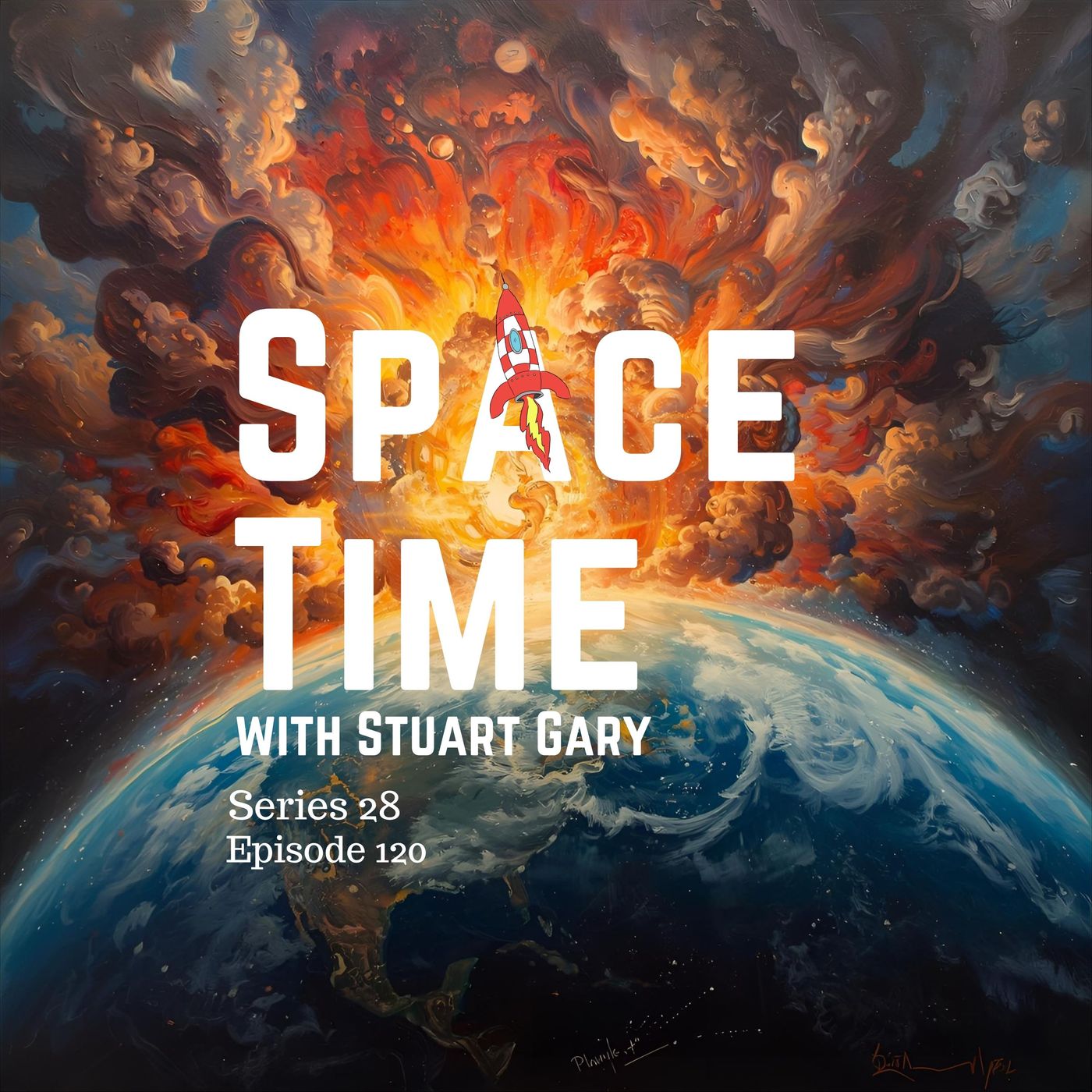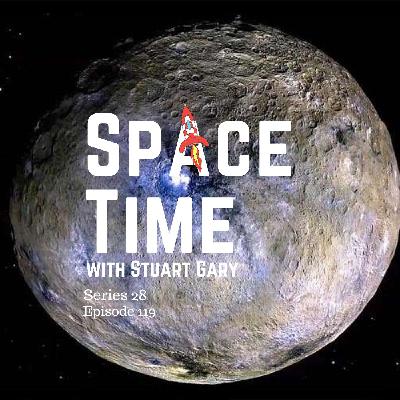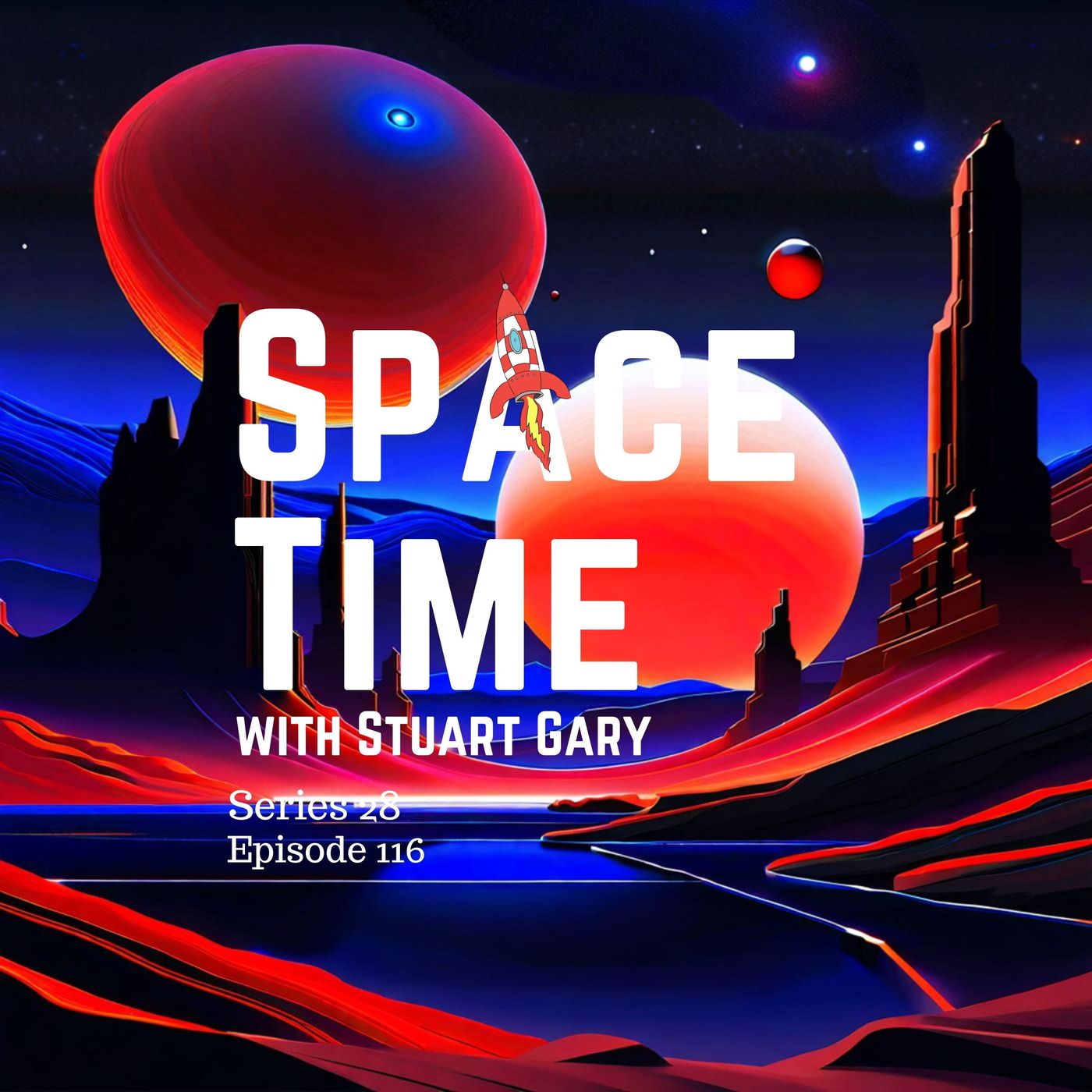Cosmic Beginnings and Stellar Discoveries: Unveiling the First Stars and Secrets of the Moon
Update: 2025-11-14
Description
(00:00:00 ) Cosmic Beginnings and Stellar Discoveries: Unveiling the First Stars and Secrets of the Moon
(00:00:47 ) Have astronomers finally seen the universe’s first stars
(00:04:06 ) Hidden secrets about the Moon and the asteroid Vesta
(00:10:45 ) Euclid peers deep into a stellar nursery full of baby stars
(00:16:05 ) The Science Report
(00:18:09 ) Skeptics guide to flat earthers falling flat on their face again
In this episode of SpaceTime, we uncover groundbreaking findings that could reshape our understanding of the universe's early stars, the Moon's hidden secrets, and the asteroid Vesta's internal structure.
First Stars Detected
Astronomers may have finally glimpsed the universe's first stars, known as Population 3 stars, thanks to observations from NASA's Webb Space Telescope. These luminous giants, formed just 200 million years after the Big Bang, are believed to have ended the cosmic dark ages and initiated the epoch of reionisation. The episode delves into the significance of these findings, which suggest that these stars were formed in small clusters and exhibit extremely low metallicity, challenging previous theories about the early universe.
Secrets of the Moon Revealed
Two NASA studies have provided fascinating insights into the Moon's internal structure through advanced gravity modelling. By analysing data from the GRAIL mission, researchers have created the most detailed gravitational map of the Moon to date, revealing variations linked to tidal deformation. This research offers clues about the Moon's geological history and volcanic activity, particularly highlighting differences between the near and far sides of the Moon.
New Insights into Asteroid Vesta
In a parallel study, scientists examined the asteroid Vesta's structure using data from NASA's Dawn spacecraft. Contrary to earlier beliefs of a layered interior, new measurements suggest Vesta may have a more uniform composition, with only a small core, if any. This revelation challenges long-held assumptions about the formation and evolution of this ancient asteroid.
Euclid Space Telescope's Stellar Nursery Observations
The European Space Agency's Euclid Space Telescope has peered into the dark cloud LDN 1641, uncovering a vibrant stellar nursery filled with young stars. This segment discusses the significance of Euclid's observations, which not only aid in fine-tuning the telescope's capabilities but also contribute to our understanding of star formation and the cosmos.
www.spacetimewithstuartgary.com
✍️ Episode References
Astrophysical Journal Letters
Nature
Become a supporter of this podcast: https://www.spreaker.com/podcast/spacetime-your-guide-to-space-astronomy--2458531/support.
(00:00:47 ) Have astronomers finally seen the universe’s first stars
(00:04:06 ) Hidden secrets about the Moon and the asteroid Vesta
(00:10:45 ) Euclid peers deep into a stellar nursery full of baby stars
(00:16:05 ) The Science Report
(00:18:09 ) Skeptics guide to flat earthers falling flat on their face again
In this episode of SpaceTime, we uncover groundbreaking findings that could reshape our understanding of the universe's early stars, the Moon's hidden secrets, and the asteroid Vesta's internal structure.
First Stars Detected
Astronomers may have finally glimpsed the universe's first stars, known as Population 3 stars, thanks to observations from NASA's Webb Space Telescope. These luminous giants, formed just 200 million years after the Big Bang, are believed to have ended the cosmic dark ages and initiated the epoch of reionisation. The episode delves into the significance of these findings, which suggest that these stars were formed in small clusters and exhibit extremely low metallicity, challenging previous theories about the early universe.
Secrets of the Moon Revealed
Two NASA studies have provided fascinating insights into the Moon's internal structure through advanced gravity modelling. By analysing data from the GRAIL mission, researchers have created the most detailed gravitational map of the Moon to date, revealing variations linked to tidal deformation. This research offers clues about the Moon's geological history and volcanic activity, particularly highlighting differences between the near and far sides of the Moon.
New Insights into Asteroid Vesta
In a parallel study, scientists examined the asteroid Vesta's structure using data from NASA's Dawn spacecraft. Contrary to earlier beliefs of a layered interior, new measurements suggest Vesta may have a more uniform composition, with only a small core, if any. This revelation challenges long-held assumptions about the formation and evolution of this ancient asteroid.
Euclid Space Telescope's Stellar Nursery Observations
The European Space Agency's Euclid Space Telescope has peered into the dark cloud LDN 1641, uncovering a vibrant stellar nursery filled with young stars. This segment discusses the significance of Euclid's observations, which not only aid in fine-tuning the telescope's capabilities but also contribute to our understanding of star formation and the cosmos.
www.spacetimewithstuartgary.com
✍️ Episode References
Astrophysical Journal Letters
Nature
Become a supporter of this podcast: https://www.spreaker.com/podcast/spacetime-your-guide-to-space-astronomy--2458531/support.
Comments
In Channel


